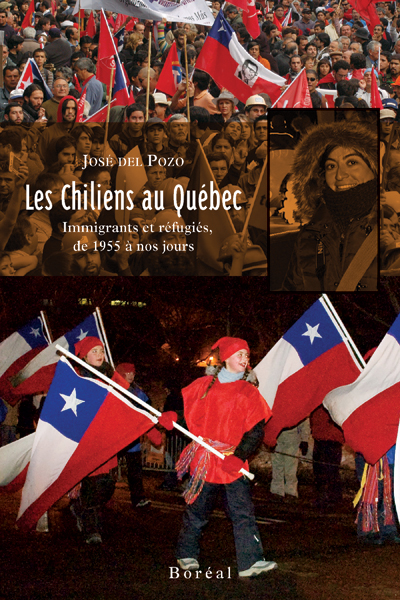One of the perks of being a graduate student is the flexibility of your schedule. The academic life is rarely a nine to five endeavour. While the end-of-semester paper writing and exam marking crunch exacts very long days (and nights), in other periods, students may find themselves with the time to pursue what I call "intellectual tangents". This post is a reflection on one such pursuit.
* * *
Whenever I see the word diaspora, I'm inclined to speak the word aloud.
Diaspora. It rolls off the tongue easily, yet it does not leave the mouth entirely. There's a part that remains, that clings on. Much like members of a diaspora - people who leave one place without severing all ties to that place.
On May 9, the University of Ottawa's
African Studies and Research Laboratory hosted a free public workshop on "Migration and the New African Diaspora". It intrigued me for a number of reasons, notably its focus on migration and place-making and my long-standing interest in the African continent. The workshop promised to foster discussion and debate on three issues:
- Identity: should we talk of the African diasporas as a single entity or are there a variety of African diasporas?
- The role of national and international institutions in making diasporas 'actors of development' in their countries of origin.
- Existing local initiatives, made possible as a result of transnational dynamics rather than institutionalisation of diasporas.
What is a diaspora? The official workshop documentation defines it as "a collective dispersed throughout the world whose members maintain relations with one another and who are involved in one or a number of projects concerning their home country". Each of the panellists added their own understanding of the concept, reflecting its diverse theoretical and instrumental applications: "an imagined community that is neither here nor there", "a fractious collective that recreates institutions, cultural emblems and tensions found in the homeland", "a means to support co-development, in which diaspora members integrate into (Canadian) society and help to develop their home country" and "a group whose money and minds can help to solve underdevelopment". Members of the diasporas can be refugees or asylum-seekers, students studying at foreign universities or economically-motivated immigrants. As such, a diaspora is a heterogeneous group.
Why is interest in diasporas growing? From a development delivery perspective, the African diasporas can infuse cash, skills and knowledge. Since the 1990s, the monetary value of remittances that the Africa diasporas send to help their families and communities and to invest has quadrupled. Remittances eclipse the amount of money that developed countries spend on development in Africa. The World Bank's diaspora program facilitates (1) the creation of an enabling environment (e.g. market-friendly reforms to attract investment), (2) increased remittances through lower transaction costs and greater transparency, and (3) brain gain initiatives. In other words, the World Bank values diasporas for their financial assets. It is shifting the burden of financing development from developed countries like Canada and intergovernmental institutions like the World Bank to individuals with a vested interest (emotional, financial or otherwise) in the African continent.
The African diasporas are also being courted by development agencies, funding organisations and governments. The opinions of the former are sought to inform policy, funding and investment decisions made by the latter. The power wielded by the diasporas is not unnoticed by African governments, some of which actively encourage diaspora members to lobby for particular policies in their adopted countries.
Investigating African diasporas is a way of understanding blackness. As one of the panellists pointed out, there are no "Blacks" in Africa, only "Algerians", "Kikuyus" (in Kenya), "Namibians", "Congolese", et cetera. Blackness is not the defining aspect of one's identity until one leaves the continent. The basis for identity is transformed from a nation (or other defining quality) to a colour. The panellist drew parallels between the trajectory of
becoming Black with the process of
becoming a woman. When renown feminist scholar Simone de Beauvoir wrote that "one is not born, but rather becomes, a woman", she asserted that societal influences trump biology in articulating what constitutes a woman and femininity. Applied to the African diasporas, this observation means that it is society - people, institutions, organisations, culture, norms, media, ... - that dictates what is means to be Black. The process and concept of blackness is not merely an academic exercise. It has real implications for citizenship and belonging in both origin and receiving countries.
Panellists and audience members alike were highly critical of underlying assumption of homogeneity. The motivation for migration for intentional migrants is clearly different from that of their refugee and displacee counterparts. Will all these people perceive the homeland in the same way? Will their children and grandchildren? Do Liberians living in neighbouring Ivory Coast support a development pathway identical to their compatriots living in China? If they differ, whose views should guide policy? The World Bank and other organisations seeking to invoke an entrepreneurial and humanitarian spirit in diasporas presuppose a singular voice. They do not recognise the plurality of voices, or "polyvocality" in the African diasporas. These organisations similarly presume diaspora members espouse common values, and do not account for differences based on gender, age, class, education, et cetera. This glossing over of differences is not unlike the popular treatment of Africa as a country, instead of as an enormous continent housing an incredible amount of diversity (see map below). (Herein the irony of this blog post's undifferentiated referral to "Africa" and use of an "Africa" label is duly noted.)
* * *
As with any tangent, it is helpful to bridge a seemingly unrelated pursuit with the overarching one. For my own research on environmental displacement and migration in the Philippines, this "intellectual tangent" provides much food for thought. Migration, both internal and international, has long been a part of the Filipino way of life. Currently, the national government has policies encouraging its population to work abroad as "Overseas Filipino Workers" or OFWs. Not only do the remittances that OFWs send back to the Philippines help families and communities, but they are also an important source of foreign investment and foreign currency to grow the economy and to repay the national debt, respectively. These OFWs, as well as the Filipinos who have laid down permanent roots in other countries, also send back ideas. Thus, to understand national and sub-national disaster and migration policies and programmes requires, I must be aware of the networks operating at the transnational scale and their influence in shaping initiatives at the local to national level.
* * *
Postscript 1:
The workshop was bilingual, with presenters and audience members switching (nearly) effortlessly between English and French. Some things were better expressed in French, others in English. The bilingualism added a layer of richness and inclusiveness to the workshop. It made an impression on me. When I am frustrated by the limitations of my French language skills and am second guessing my choice to do a doctorate in a second language (which inevitably happens from time to time), I will picture myself in that workshop room.
Postscript 2:
There will be a follow-up workshop (date and specific theme TBD). I will post any links to summary reports or other workshop-inspired material as it is made available.













